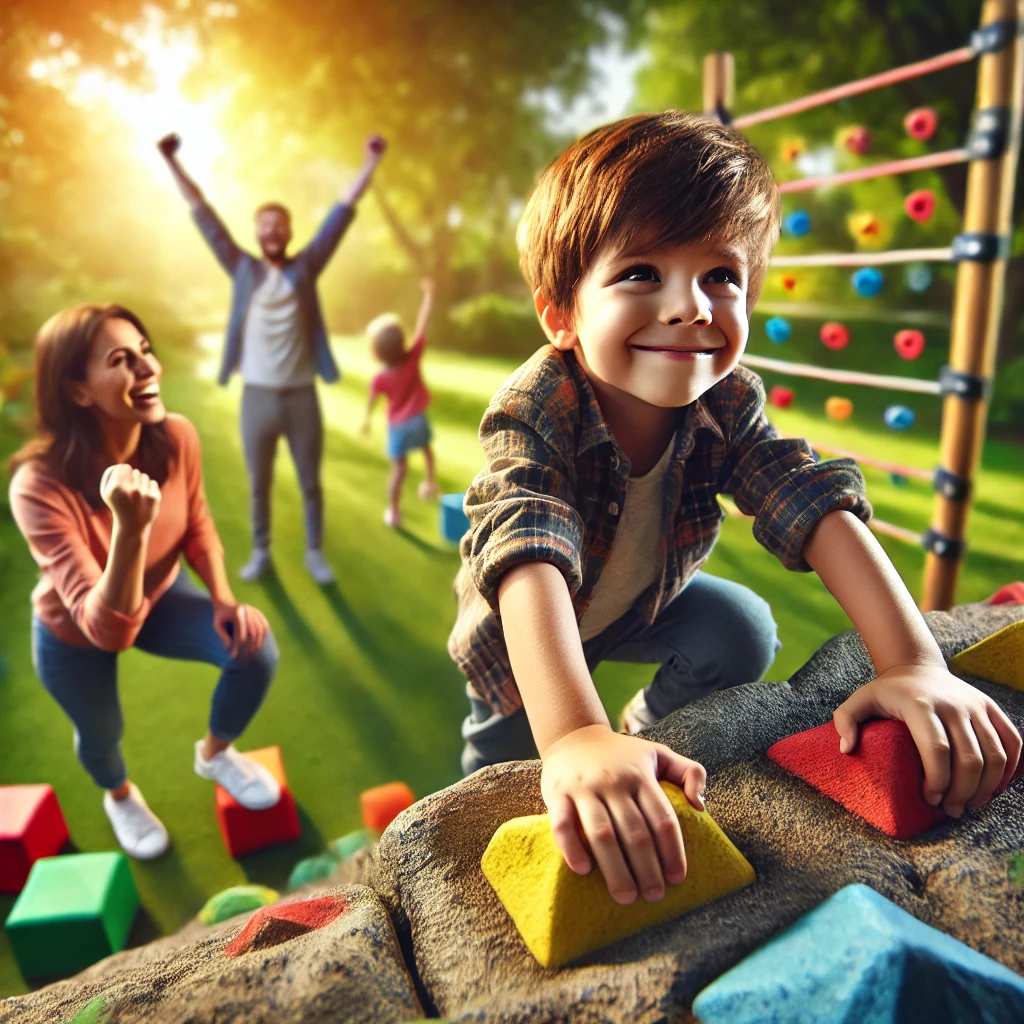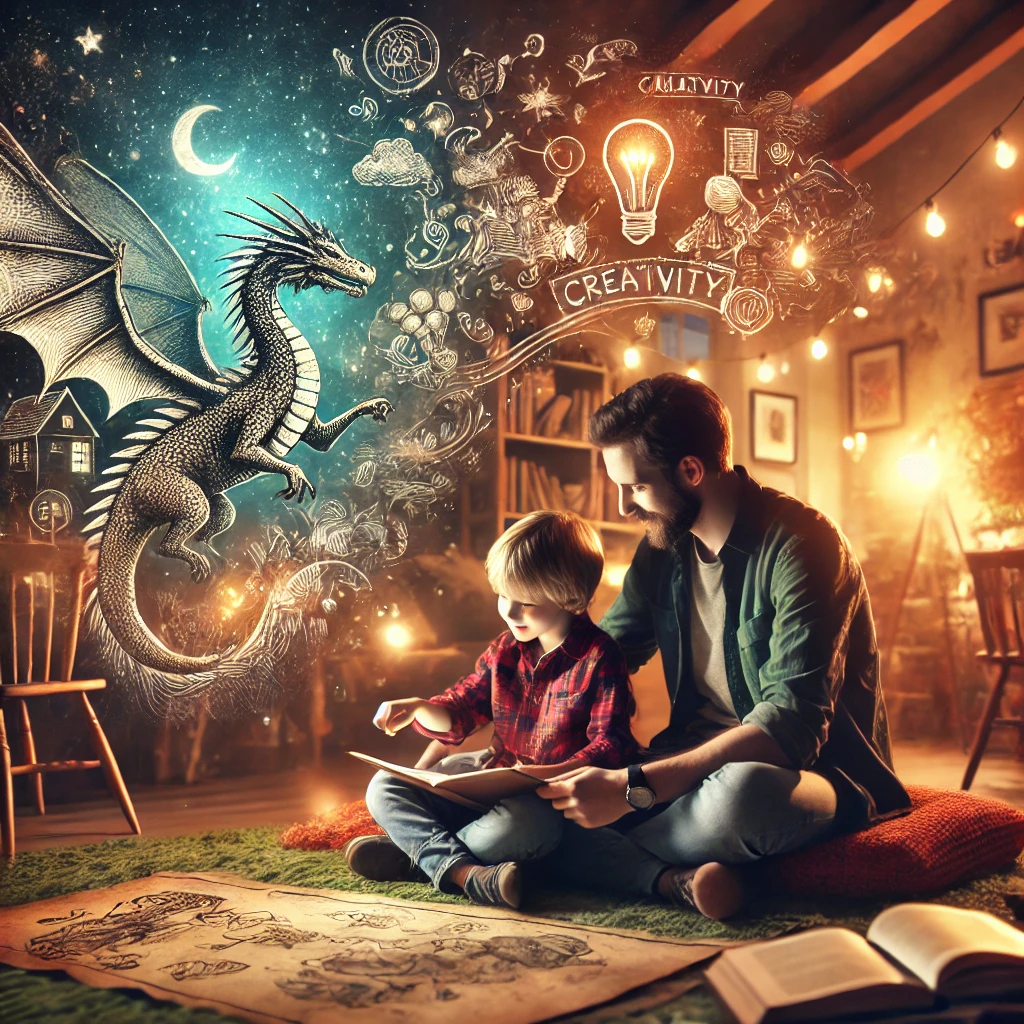Imagine this: your child creates a magical tale of dragons soaring through enchanted forests or robots embarking on daring adventures. They’re laughing, collaborating, and learning—all while having fun. 🌟✨
They may seem like they’re just playing, but play is so much more than passing the time—it’s the cornerstone of your child’s development. Through play, children ignite their creativity 🎨, tackle challenges with problem-solving 🧩, strengthen social connections 🤝, and build emotional resilience 🌱. It’s their way of exploring the world, mastering essential life skills, and unlocking their full potential. 🌟
As parents, we all want the very best for our children. Today, we’re diving into something that might surprise you: play isn’t just about having fun—it’s the very foundation of your child’s development. 🧠🌱 Cutting-edge science reveals the incredible benefits of play, showing how it shapes creativity, problem-solving, social skills, and emotional resilience.
Let’s explore how the magic of play can transform your child’s development—and how you can easily incorporate more of it into everyday life.
🧠✨ The Benefits of Play for Child Development

Play isn’t just a way to keep kids entertained—it’s essential for their overall growth and development. Here are the key benefits backed by science:
1. Strengthens Neural Pathways 🔄
Play helps the brain form and strengthen connections, particularly in areas that handle problem-solving, creativity, and emotional regulation. These enhanced pathways prepare children to face challenges with greater confidence and skill.
Example: Building a LEGO tower teaches kids to experiment with structures, make adjustments when it topples, and think critically about how to make it sturdier.
2. Builds Resilience and Adaptability 🌱
Dr. Stuart Brown’s research highlights that play gives children a safe space to experiment, face setbacks, and adapt to unexpected changes. These moments nurture emotional resilience and perseverance.
Example: During a game of tag, a child learns to adapt their strategy if they keep getting caught, showing how play encourages quick thinking and flexibility.

3. Encourages Social Skills and Teamwork 🤝
Collaborative play helps kids develop essential social skills, such as empathy, communication, and teamwork. It teaches them how to listen, respect others’ contributions, and work toward shared goals.
Example: In a game of capture the flag, kids learn to coordinate with teammates, strategize, and support each other to win.
4. Boosts Creativity and Imagination 🎨
Free play unlocks a child’s natural creativity, inspiring them to think outside the box and approach challenges with innovative solutions.
Example: Building a fort out of blankets and furniture encourages resourcefulness, showing kids how to repurpose everyday items to achieve their goals.
5. Fosters Physical Development and Coordination 🏃
Active play strengthens motor skills, balance, and coordination while promoting overall physical health.
Example: Activities like climbing a playground structure help children improve their balance and spatial awareness, while also building their confidence to tackle new challenges.
By fostering adaptability, creativity, and teamwork, play—whether it’s physical, imaginative, or social—prepares children for both social and intellectual success. 🌟
🧠 The Science Behind Play: How It Shapes Your Child’s Growth

Play is much more than entertainment—it’s a powerful catalyst for your child’s brain and emotional development. Here’s how cutting-edge research explains the transformative benefits of play:
Predictive Processing: Learning Through Imagination 🔄
What it is:
The brain is a prediction machine, constantly making guesses about what might happen and learning from the outcomes.
Why it matters:
Play creates a safe space for kids to test ideas, adapt to outcomes, and refine their problem-solving skills. Imaginative games strengthen neural pathways that support critical thinking and decision-making.
Example:
A child deciding how a knight defeats a dragon in a story isn’t just being creative—they’re practicing cause-and-effect reasoning while expanding their imagination.

Growth Mindset: Embracing Challenges 🌱
What it is:
Dr. Carol Dweck’s research reveals that kids who view challenges as opportunities rather than obstacles are more likely to persist and learn from setbacks.
Why it matters:
Collaborative and creative play allows children to experiment without the fear of failure, building resilience and adaptability.
Example:
If a plot twist in a story doesn’t work out, kids learn to pivot, try a new idea, and realize that growth comes from effort, not perfection.

Zone of Proximal Development (ZPD): Stretching Abilities 🚀
What it is:
Psychologist Lev Vygotsky’s ZPD theory explains that children learn best when tasks are slightly beyond their current skill level but achievable with support.
Why it matters:
Games like collaborative storytelling strike the perfect balance of challenge and guidance, boosting confidence while developing teamwork and creativity.
Example:
An older sibling might encourage a younger child to introduce a complex character in the story, gently guiding them to explore new narrative possibilities.

Stuart Brown’s Research on Play: A Lifelong Benefit 🎮
What it is:
Dr. Stuart Brown’s research highlights the enduring importance of imaginative play for emotional intelligence, creativity, and problem-solving across all stages of life.
Why it matters:
Storytelling games combine structured collaboration with the boundless creativity of free play, helping children build skills that extend far beyond childhood.
Example:
Inventing a story together as a family fosters empathy, communication, and innovative thinking—skills that children will carry into their education, relationships, and future careers.
Through play, children not only build stronger brains but also learn to navigate the world with curiosity, adaptability, and confidence. 🌟 Play isn’t just vital—it’s transformational.
Now That We’ve Explored the Benefits and Science of Play 🌟

We’ve seen how play can transform your child’s creativity, resilience, and social skills, backed by fascinating research in neuroscience and psychology. But how can you bring these insights to life in your daily routine?
Let’s dive into a simple, science-backed activity you can play with your child that’s adaptable to any age group. This game not only nurtures essential skills but also strengthens your bond through shared fun and discovery.
Introducing the Collaborative Story Game 🎮
The Collaborative Story Game is a playful, interactive activity where you and your child create a story together, one sentence at a time. It’s simple, flexible, and can be tailored to any age or interest, making it a perfect tool for fostering creativity, teamwork, and critical thinking.
Here’s how it unfolds:
Step 1: Set the Stage 🎭

What to do:
Begin with an intriguing and imaginative opening line to ignite your child’s curiosity and creativity.
Example:
“Deep in a magical forest, a tiny robot stumbled upon a glowing treasure map that seemed to hum with secrets.”
Why it works:
An engaging prompt sparks their imagination while providing structure. This gives your child the confidence to start contributing to the story without feeling overwhelmed.
What they learn:
By crafting ideas from a simple prompt, your child practices brainstorming, creative thinking, and taking the first step in collaborative activities.
Key Tip:
Tailor the opening line to your child’s passions—whether it’s mythical creatures, exciting space missions, or daring superhero adventures. When the prompt connects with their interests, their excitement and engagement soar! 🌟
Step 2: Take Turns Adding to the Story 🔄

What to do:
Each participant adds one sentence to the story, passing the narrative along and building on what was said before.
Example:
- Player 1: “The robot followed the map to a hidden cave.”
- Player 2: “Inside the cave, it found a sleeping dragon guarding a shiny gold key!”
Why it works:
Turn-taking encourages active listening and collaboration. It teaches children to value others’ contributions and seamlessly weave their ideas into a shared narrative.
What they learn:
This step helps your child practice social skills like patience, empathy, and teamwork by respecting others’ ideas and working together to create something unique.
Key Tip:
Encourage your child to stay present in the moment and respond naturally to the story as it unfolds, rather than planning ahead. This keeps the narrative spontaneous and fun!
Step 3: Embrace Surprises 🌈

What to do:
Encourage your child to include unexpected twists or imaginative turns to keep the story engaging and unpredictable.
Example:
“The dragon wasn’t guarding the key—it was looking for a friend to help unlock a secret door!”
Why it works:
Introducing surprises fosters creativity and teaches kids to adapt quickly. It keeps the game exciting and challenges them to think on their feet.
What they learn:
This step nurtures problem-solving and adaptability, helping your child build resilience and learn to respond positively to unexpected changes.
Key Tip:
Celebrate every creative twist, no matter how silly or unexpected, to boost your child’s confidence and encourage their enthusiasm for imaginative thinking.
Step 4: Reflect Together 🔍

What to do:
After the story concludes, take a moment to discuss and reflect on the experience.
Ask questions like:
- “What was your favorite part of the story?”
- “How did working together make the story better?”
Why it works:
Reflection helps children process what they’ve learned and connect the experience to real-world skills like teamwork and collaboration.
What they learn:
This step fosters self-awareness and an appreciation for how teamwork creates richer, more engaging results than working alone.
Key Tip:
Focus on celebrating their creativity and teamwork rather than critiquing the story. Reinforce the fun and the lessons they’ve learned from collaborating.
Why This Works 💡

The Collaborative Story Game combines creativity, critical thinking, and emotional intelligence, helping children develop essential life skills in a fun and engaging way. Through structured steps and open-ended storytelling, your child learns how to:
- Collaborate effectively with others.
- Adapt to surprises and embrace challenges.
- Build confidence in their ideas and contributions.
Whether it’s about magical robots, talking dragons, or intergalactic adventures, every story is a chance for your child to grow, learn, and shine. 🌟
Dos and Don’ts for the Collaborative Story Game ✅❌

✅ Do: Encourage Creativity and Exploration 🌟
- Why it matters: Kids thrive when they feel free to express themselves without fear of being judged.
- How to do it: Celebrate their ideas, no matter how wild or silly. Let their imagination lead the way.
❌ Don’t: Critique or Overcorrect 🚫
- Why it matters: Harsh feedback or corrections can stifle creativity and make the game feel like a chore.
- How to avoid it: Focus on the fun and value of participation rather than pointing out flaws in the story.
✅ Do: Take Turns Fairly and Listen Actively 🔄
- Why it matters: Modeling patience and teamwork teaches your child valuable social skills.
- How to do it: Wait for your turn, acknowledge their contributions, and build on their ideas.
❌ Don’t: Dominate the Story 🚫
- Why it matters: Taking over can discourage your child from contributing and reduce their confidence.
- How to avoid it: Let your child steer the narrative, even if it heads in unexpected directions.
Final Thoughts: The Power of Play 🌈

The Collaborative Story Game is more than just a fun activity—it’s a gateway to unlocking your child’s potential. By sparking their imagination, encouraging adaptability, and fostering teamwork, you’re helping them develop vital skills that will support them in school, relationships, and life.
Through each shared laugh and every creative twist, your child is building a foundation of resilience, confidence, and collaboration. The beauty of this game lies in its simplicity—it doesn’t require fancy tools or materials, just a little creativity and your willingness to join the adventure.
So, gather your family, start a story, and watch as your child grows into a more creative, adaptable, and connected individual—one magical tale at a time. 🌟
Found this guide useful? Help others discover the Getting to Give Project by sharing it. Your support allows more parents to access cutting-edge, science-backed resources at no cost. 
 Age-Appropriate Play Ideas
Age-Appropriate Play Ideas
For Young Children (Ages 4-7)
Build a Fort 
Draw or Paint an Imaginary Animal 
Simple Scavenger Hunt 
Mini “Restaurant” with Pretend Food 
For Kids (Ages 8-12)
Write a Story or Comic 
Puzzle or Lego Challenge: Work together to build something, fostering teamwork.
Obstacle Course 
Cooperative Building Games 
For Teens (Ages 13+)
Design a Board Game 
DIY Project 
Cook a Creative Meal 
Photography Challenge 
 For Further Reading: The Science Behind Play & Development
For Further Reading: The Science Behind Play & Development
For parents interested in the research:
Lev Vygotsky’s Zone of Proximal Development (ZPD)
Vygotsky’s ZPD theory emphasizes that children learn best when engaged in tasks slightly beyond their current abilities, provided they receive appropriate support.
-
- Vygotsky’s Zone of Proximal Development
This article explains the concept of ZPD and its significance in educational settings, highlighting how supported challenges facilitate learning.
-
- Vygotsky’s Theory of Cognitive Development
This resource delves into Vygotsky’s broader theories, including the ZPD, and discusses their implications for teaching and learning.
Dr. Stuart Brown’s Research on Play
Dr. Stuart Brown’s research reveals the emotional and cognitive benefits of play, including resilience and empathy-building.
-
- Play: How it Shapes the Brain, Opens the Imagination, and Invigorates the Soul
In this book, Dr. Brown explores the science of play and its essential role in fueling intelligence and happiness throughout life.
-
- Stuart Brown: Play is more than just fun
In this TED Talk, Dr. Brown discusses how play is essential to our social skills, adaptability, intelligence, creativity, and ability to problem-solve.


 Age-Appropriate Play Ideas
Age-Appropriate Play Ideas For Further Reading: The Science Behind Play & Development
For Further Reading: The Science Behind Play & Development

















